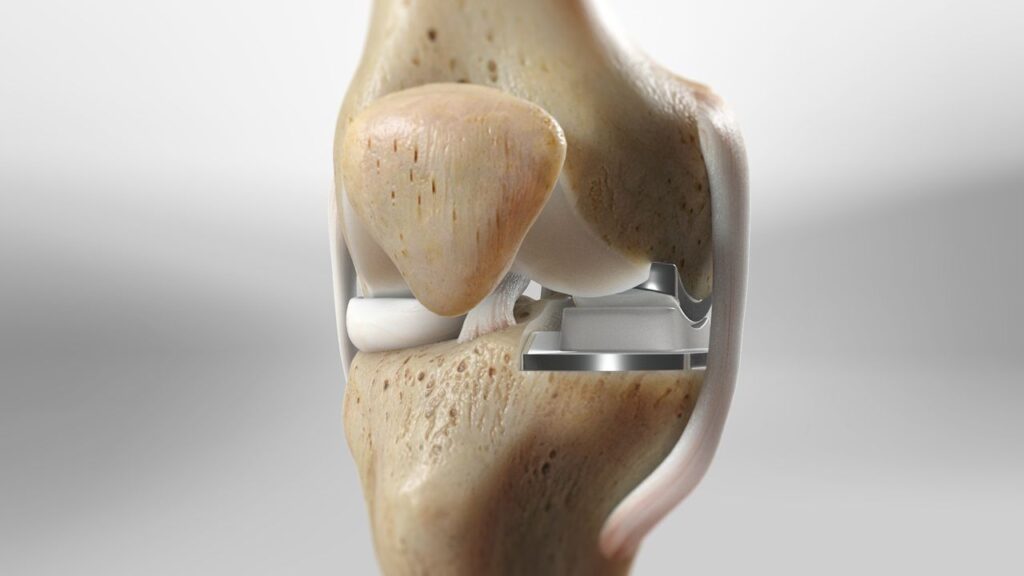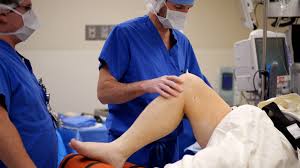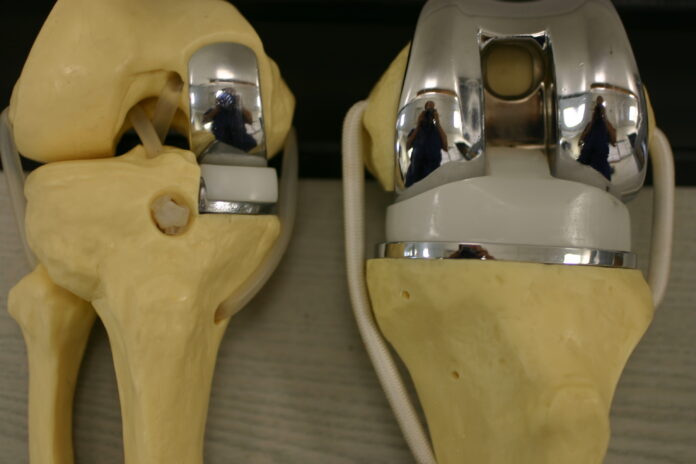Chronic knee pain due to arthritis or injury can significantly affect your daily life. When conservative treatments no longer provide relief, surgical options like total knee replacement (TKR) and partial knee replacement (PKR) become important considerations. Understanding the differences between these two procedures, along with their benefits and drawbacks, is crucial in making an informed decision. This article will compare TKR and PKR, outline the criteria for selecting each option, and discuss potential outcomes to help you choose the best path for your knee health.
Overview of Knee Replacement Procedures
Total Knee Replacement (TKR)

Total knee replacement surgery involves the complete removal of damaged cartilage and bone from the femur (thighbone), tibia (shinbone), and patella (kneecap). In this procedure, the surgeon replaces the removed components with artificial parts made of metal and plastic. TKR is commonly recommended for patients suffering from severe arthritis, extensive joint degeneration, or those who have exhausted all non-surgical treatment options.
Key Features of TKR:
- Indications: Typically recommended for those with extensive joint damage and multiple compartments affected by arthritis.
- Surgical Procedure: This surgery requires significant bone removal and the replacement of all three knee compartments.
- Recovery Timeline: Patients usually face a longer recovery period compared to PKR, with rehabilitation starting soon after surgery.
- Durability: TKR implants generally last between 15 to 20 years, depending on factors like activity level, weight, and overall health.
Partial Knee Replacement (PKR)

Partial knee replacement, often referred to as unicompartmental knee replacement, is a less invasive alternative that focuses on replacing only the damaged compartment of the knee joint. The knee comprises three compartments: medial (inner), lateral (outer), and patellofemoral (front). PKR is particularly suitable for patients with arthritis confined to a single compartment.
Key Features of PKR:
- Indications: Ideal for individuals with isolated joint damage and intact ligaments.
- Surgical Procedure: This surgery requires a smaller incision and less bone removal compared to TKR, allowing for a more natural knee function.
- Recovery Timeline: Patients often experience a quicker recovery, as the surgery is less invasive.
- Durability: PKR implants have a similar lifespan to TKR implants, but further procedures may be necessary if arthritis develops in other compartments.
Choosing Between TKR and PKR
1. Severity of Arthritis
The severity and location of arthritis are key determinants in choosing between TKR and PKR. TKR is advisable for patients with extensive arthritis affecting multiple compartments, whereas PKR is more appropriate for those with localized arthritis.
2. Age and Activity Level
Younger, more active patients might find PKR beneficial due to its less invasive approach and faster recovery. Older patients or those with lower activity levels may prefer TKR for its comprehensive relief and stability.
3. Overall Health
Patients with significant health conditions might not be ideal candidates for major surgeries like TKR. In such cases, PKR can be a safer option, as it usually involves a quicker recovery and fewer complications.
4. Surgical Evaluation
Surgeons will assess knee alignment, ligament stability, and any deformities. If the ligaments are stable and the joint is well-aligned, PKR may be the recommended procedure.
5. Patient Preferences
Patients should discuss their lifestyle and goals with their healthcare provider. Some individuals may prefer a conservative approach, while others may opt for TKR for long-lasting relief.
Comparing Outcomes
Total Knee Replacement Outcomes

Benefits:
- Comprehensive Pain Relief: TKR effectively alleviates pain and restores function for patients with significant joint damage.
- Restoration of Knee Function: Most patients regain a substantial range of motion, allowing them to engage in daily activities such as walking, climbing stairs, and participating in low-impact sports.
- High Satisfaction Rates: Research indicates high satisfaction levels among TKR patients, many of whom report improved quality of life.
Risks:
- Surgical Complications: Possible risks include infection, blood clots, and complications from anesthesia.
- Longer Recovery Time: Recovery can take several months, with physical therapy being essential for regaining strength and mobility.
- Potential for Revision Surgery: While TKR implants are durable, some patients may require revision surgery due to wear or loosening.
Partial Knee Replacement Outcomes
Benefits:
- Faster Recovery: Patients generally experience a quicker recovery, often returning to daily activities within a few weeks.
- Less Pain and Blood Loss: PKR is associated with reduced postoperative pain and less blood loss during surgery.
- Preservation of Healthy Tissue: The minimally invasive nature of PKR allows surrounding healthy tissue and ligaments to remain intact, promoting a more natural knee function.
Risks:
- Limited Applicability: PKR may not be suitable for patients with extensive knee damage, limiting its usefulness for some individuals.
- Future Surgery Potential: If arthritis progresses in other compartments of the knee, a patient may eventually need to undergo a TKR.
- Uncertain Longevity: Although PKR implants can last many years, further procedures may be necessary in the future.
Conclusion: Finding the Right Option for You
The choice between total knee replacement and partial knee replacement hinges on various factors, including the extent of knee damage, overall health, activity level, and personal preferences. While TKR is generally recommended for patients with widespread joint degeneration, PKR may be the more suitable option for those with localized arthritis seeking a quicker recovery.
Before making a decision, it is vital for patients to consult with an orthopedic surgeon. A thorough evaluation, including imaging studies and a discussion of lifestyle goals, can help determine the most appropriate treatment plan. Ultimately, the choice between TKR and PKR should be a collaborative effort between the patient and their healthcare team, aiming for the best possible outcome and improved quality of life.
By understanding the differences, benefits, and potential risks associated with both total and partial knee replacements, patients can feel empowered to make informed choices about their health and well-being.


